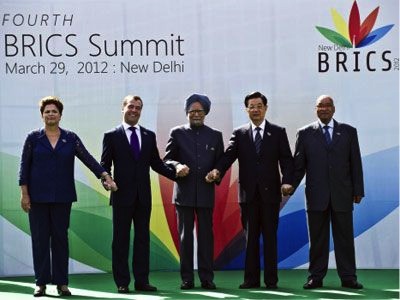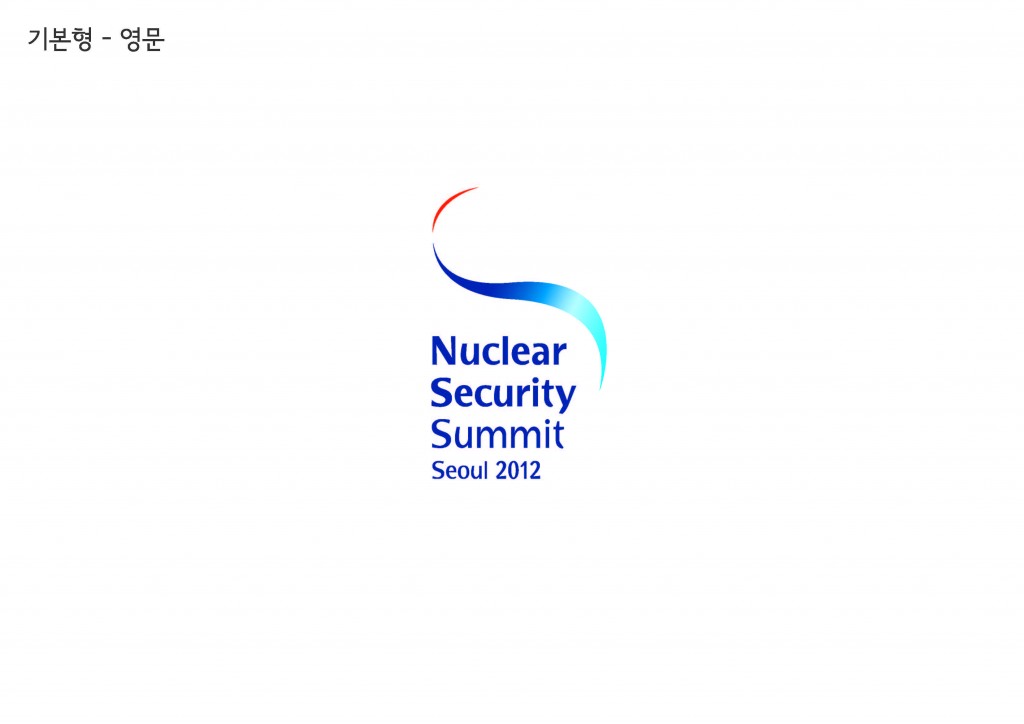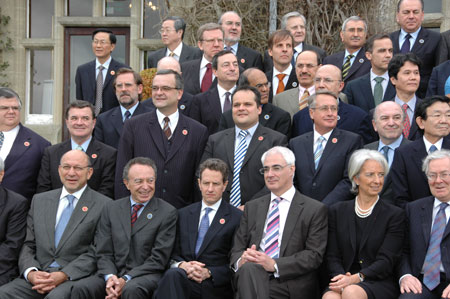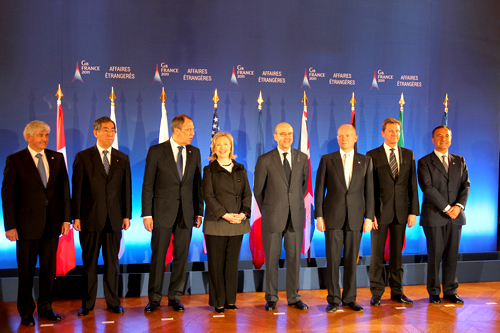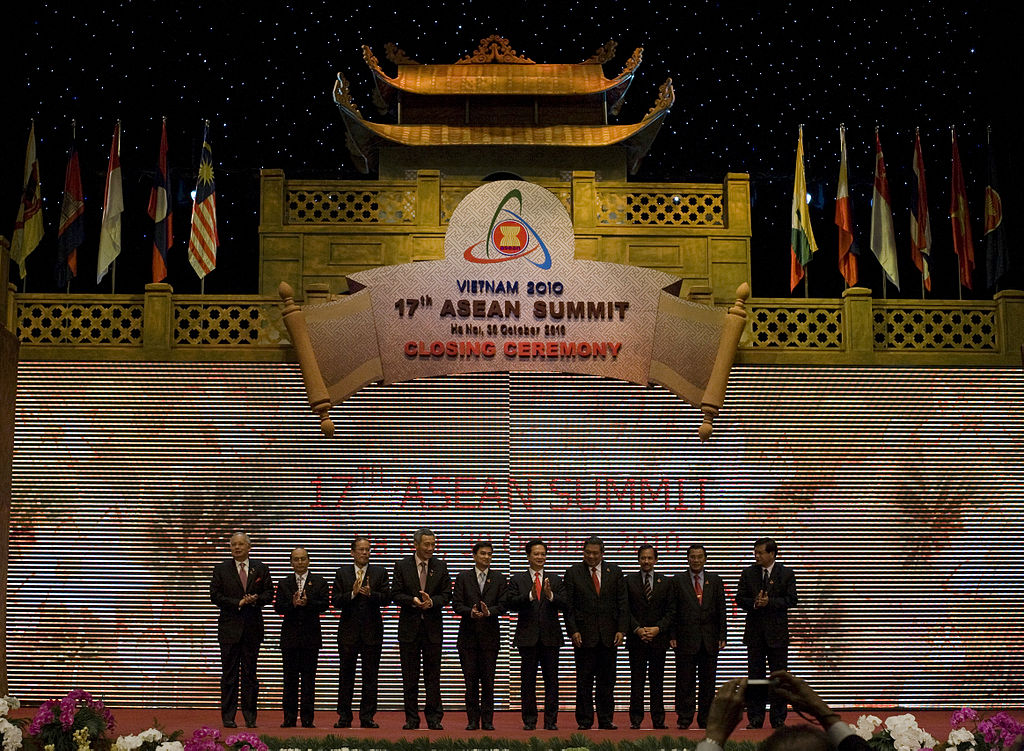
[Editors Note: This post is somewhat long – too long – my apologies, as I am attempting to describe the meaning of ‘Global Summitry’. The explanation follows.]
It was the receipt of a very informative piece by Mexico’s Minister of It was the receipt of a very informative piece by Mexico’s Minister of Foreign Affairs Patricia Espinosa-Cantellano that got me thinking about success and effectiveness in global governance. We are closing in on another G20 Leaders Summit – this Los Cabos in June – hosted by our Mexican colleagues. This will be the seventh Leaders Summit since its inauguration with the global financial crisis in November 2008 in Washington. As one of the Editors of the soon to be launched ejournal – Global Summitry – look for it! –I am fortunate to be in possession of an upcoming article from the Mexican Foreign Minister. I am not about to ‘spill the beans’ here – but stay tuned for its appearance and also possibility of further examination of the role of Mexico as the host of the G20 summit. But receiving that first article got me to thinking about the progress of the G20 specifically and in fact more generally global summitry.
This original impulse to examine the progress of global summitry was further encouraged by several upcoming conferences in Chicago – the first organized by the Chicago Council of Global Affairs – I’ve already commented on the New York Workshop in the recent post “Strange Members“. It will be held on May 8th. The next conference – commencing on May 10th is organized by the Stanley Foundation, happily a frequent partner with us at the Munk School of Global Affairs and additionally in this case the Roberta Buffet Center for International and Comparative Studies at Northwestern. In the “shadow” of the G8 Leaders Summit – though the President very inconveniently switched the venue to Camp David – and the Leaders NATO meeting, the partners organized a Conference entitled “The Apex of Influence – How Summit Meetings Build Multilateral Cooperation”. By the way you will be able to livestream the proceedings of this conference – if you are so inclined at fora.tv. Join us virtually if you cannot be with us in Chicago. The topic directly raises the question of global summitry health. And a quick read of the conference agenda will identify as an early panelist – our colleague Dan Drezner from the Fletcher School at Tufts University. You need not wonder any further why Dan raised the question of summitry success/failure in his recent post at Foreignpolicy.com.
So I propose to do two things here. First, I wanted to examine the scope of what we at the Munk School refer to as ‘global summitry’. Is it different/the same as global governance – the now accepted term – I think – for what the international relations types generally referred to in the past as ‘multilateralism’? And does the addition of ‘global’ alter significantly the scope of inquiry? And then what I want to do – as the title suggest is do a bit of ‘temperature taking’ on the matter.
My effort to describe the scope of global summitry and distinguish it from global governance is enmeshed today in a strong and loud debate over the changing power distribution among the leading states of the international system and indeed in the overall shape of the international architecture as a result of that changing power equation. A ‘hot’ and continuing debate rages over whether the United States is in decline and whether it is fading as the hegemonic leader in global politics. Linked to this decline debate is the ‘Rise of the Rest’ and the consequence for governance of both US decline and the rise of the emerging market countries, especially China but also Brazil and India and occasionally throwing in Russia and South Africa. At the one end is Charlie Kupchan at Georgetown who in his recent book, No One’s World: The West, The Rising Rest, and the Coming Global Turn determines the west is declining including, possibly especially, the United States and that the Rise of the Rest will end the current liberal internationalism order as those rising powers will be unwilling to adopt the norms and rules that US hegemony created and shaped after World War II. The outcome of such a change will be that there will not be a single power there to replace the leadership of the United States, nor will there be defined ‘rules of the game’ for states in the global order. By implication disorder will reign.
Now firmly in the debate over decline, rise and transformation is Princeton’s John Ikenberry. John acknowledges the decline of the United States (see his Liberal Leviathan: The Origins, Crisis, and Transformation of the American World Order) but believes that Rise of the Rest will remain attracted to, or committed to, the current order – capitalism, open markets, rule of law, etc., Liberal internationalism will continue to frame the political order in some significant fashion. As the title implies there may be a crisis but if there is, it is a crisis of US leadership not of liberal internationalism. And of course there is Robert Kagan of Brookings, at the other end – his recent book, The World America Made – who suggests that the declinism thesis is well, overdrawn and that the United States will remain the continuing leader, or it better for the sake of order.
Now Dan Drezner in a broad-ranging review of Kupchan – not to mention some of the variants authored by others in the May/June issue of National Interest – places the variants of the current global order debate before us this way:
- Power is diffusing from the United States to developing countries;
- Power is diffusing from states to non-state actors; and
- As a result of the bullet points above, global governance is going to be horrible for quite some time
In the opening of the recent special issue of The National Interest on crisis of the old order titled, “Crisis of the Old Order” Brent Scowcroft the former national-security adviser to President Ford and then to George H.W. Bush suggests this sharp picture of the changing international political order:
We are struggling with institutions and practices of an Old World when the Old World is fading.
How then do we best describe the current architecture of the international political order? How does it operate? And who are the principal actors and what are the drivers that describe its operation – and ultimately its success or failure? There is little question that the old order is changing – but how?
The concept of global governance really took off with the end of the Cold War. This sudden revolution in the international political order is the exclamation point in the evolution of the geopolitical landscape of the international system. There were, and are, both analytic and practical, or real-world reasons for the emergence of global governance discourse. On the analytic side the demise of the Soviet Union completely altered the shape of the international political order. As Michael Barnet and Raymond Duvall wrote in their edited volume Power in Global Governance in 2005:
The Cold War was not only a description of a bipolar system; it also represented a mode of organizing the analysis and practice of international politics. With the end of the Cold War, the issue became what would and should take its place. For many, global governance represented a way of organizing international politics in a more inclusive and consensual manner. … Alongside the eclipse of the Cold War was the emergence of globalization. Although globalization had various dimensions, a unifying claim was that intensifying transnational and interstate connections requires regulatory mechanisms – governance, although not a government – at a global level.
That last comment by the authors is telling. Global governance language initially evoked concern among many international relations experts that the in a post Cold War world the political order that was being described by analysts was moving to global government. US scholars in particular stuck rather overlong to “multilateralism”. But slowly the language of global governance assumed something of primacy in international relations discourse. As Margaret Karns and Karen Mingst in their text International Organizations: The Politics and Processes of Global Governance in 2010 suggested:
Thus global government is not global government; it is not a single world order; it is not a top-down, hierarchical structure of authority. It is the multilevel collection of governance-related activities, rules and mechanisms, formal and formal, public and private, existing in the world today.
Many who have come to examine global governance have focused particularly on its non-hierarchical dimensions and on the informal structures that have emerged. They have emphasized non-state actors in many varieties including individuals. While global summitry acknowledges – embraces even – the flattening of authority structures, the state and institutions of the state remain at the heart of global summitry. But as Princeton’s Anne-Marie Slaughter suggests in her examination of governmental organizations and networks, the state does not disappear but it does often find itself “disaggregating into its component institutions.”
Thus global summitry remains focused on state institutions and its numerous variations. It consciously eschews, however, a focus on just traditional formal treaty-based institutions. Global summitry is tuned to leaders summits for sure but it acknowledges and focuses on the many organizations – governmental, and non-governmental, formal and informal – that constitute the galaxy of global summitry. This examination adopts the “Iceberg Theory of Global Governance”. Below the leaders, lie the growing system of meetings and work of ministers, and their ministries, international institutions but also transgovernmental organizations and regulatory networks with formal and informal regulatory actors. These actors are all part of global summitry. As Klaus Dingwerth and Philipp Patterberg described in their article in Global Governance in 2006 “Global Governance as a Perspective on World Politics”:
In essence global governance implies a multiactor perspective on world politics. … the term global governance conceives of world politics as a multilevel system in which local, national, regional, and global political processes are inseparably linked.
Global summitry accepts this far more complex political order where the sharp boundaries of international, regional and national policy have been partially erased but where the leaders and governments remain at the heart of international politics. International institutions have also not disappeared but traditional institutions, the UN and Bretton Woods systems are now in many instances displaced or supplemented by informal organizations. And the world of traditional diplomacy conducted by foreign ministers and their officials have been remade with the appearance of many meetings of their mainline ministers and their officials – finance, and trade, central bankers, etc., and the numerous meetings of regulatory officials both public and self regulatory of many varieties. Again Princeton’s Anne –Marie Slaughter, a strong proponent of international networks since the turn of the century suggests:
From a theoretical perspective, government networks straddle and ultimately erase the domestic/international divide.
Global summitry examines all these actors in the organization and execution of global politics and policy. The focus is then theoretic but more centrally, empirical and policy-attentive. It is alert to the repositioning of global politics and policy premised on changing dynamics and dimensions of international relations. Besides the redistribution of power among states there are other changing dimensions that are very much a part of global summitry and impact this redistribution as well. The international system has seen a marked shift, some of which I have talked about earlier: from ‘hard’ law to ‘soft’ law; from formal institutions – often hierarchical – to informal ‘flattened’ or horizontal institutions; from national sovereignty to globalization. The last dimension marks a continuing struggle of states and their leaders with many both offensively and defensively asserting national sovereignty. The rhetoric remains fixed on national autonomy yet reality is often matched against the reality of globalization and the impact of tight and possibly ever-tighter interdependence.
Finally a word on the term ‘global’ in global summitry. A perspective could well be that global is exactly that – universal such as the UN – especially given the focus on states. The term should not be taken as that. Even in the UN the critical UN Security Council is not universal – far from it. And so many institutions – often described as regional – seem perfectly a part of global summitry especially those that are not particularly geographically narrow in scope but generate policy that impacts the global order.
Global summitry remains focused on state actors but in many new arrangements and again examines all these actors in the organization and execution of global politics and policy. And because it focuses not so much theoretically but more analytically and empirically on policy and policy impacts, it is sensible to assess the success/failure of the actors and their global governance policies.
But we’ve gone on far too long already. So, that’s for another day.

